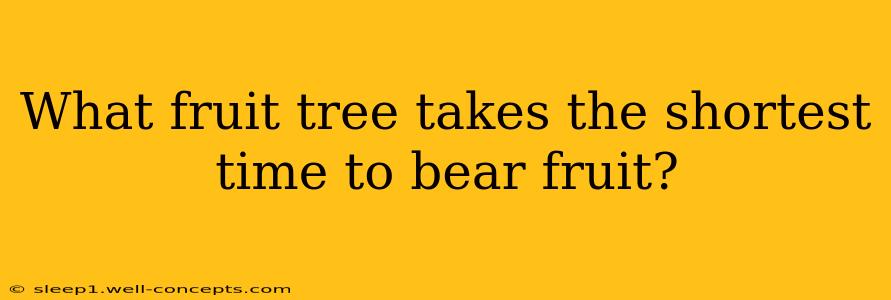Want to enjoy fresh fruit from your own backyard as quickly as possible? Choosing the right fruit tree is key, and some varieties are far faster to produce than others. While the exact timeframe depends on factors like climate, soil quality, and tree care, some fruit trees consistently outperform others in terms of speed to harvest. This guide explores the fastest-fruiting options, helping you make an informed decision for your garden.
Fastest Fruit Trees: A Quick Overview
Several fruit trees are known for their relatively short time to first harvest. Here are some top contenders, often producing fruit within one to three years from planting:
1. Dwarf and Semi-Dwarf Fruit Trees:
These smaller versions of standard fruit trees are bred to produce fruit earlier. Their compact size makes them suitable for smaller gardens, and their faster fruiting is a significant advantage. Look for dwarf or semi-dwarf varieties of:
- Apples: Certain apple varieties, particularly those grafted onto dwarfing rootstocks, can produce fruit within 2-3 years.
- Peaches: Peaches are notorious for their fast growth and early fruiting, often bearing fruit within 1-2 years.
- Cherries: Some cherry varieties, particularly those grafted onto dwarf rootstocks, can also bear fruit relatively quickly.
- Plums: Similar to peaches, certain plum varieties can produce a harvest within a short timeframe.
2. Specific High-Yielding Varieties:
Beyond the size of the tree, some specific cultivars are bred for rapid fruiting. Researching these varieties is crucial when selecting your tree. Local nurseries are invaluable resources for finding varieties well-suited to your area.
3. Berry Bushes (Technically Not Trees):
While not technically trees, berry bushes are often included in discussions about fast-fruiting options due to their rapid yield. Raspberries, blueberries, and strawberries can start producing fruit in their first year or very shortly thereafter, making them excellent choices for the impatient gardener.
Factors Affecting Fruiting Time
Several factors influence how quickly your fruit tree will bear fruit:
- Rootstock: As mentioned earlier, the rootstock used for grafting significantly impacts growth rate and fruiting time. Dwarfing rootstocks generally result in faster fruiting.
- Climate: Warmer climates generally lead to faster growth and fruiting. Choose varieties suited to your specific USDA hardiness zone.
- Soil Quality: Healthy, well-draining soil is essential for optimal tree growth. Amend your soil with compost or other organic matter to ensure proper nutrient levels.
- Proper Care: Adequate watering, fertilization, and pruning are crucial for encouraging healthy growth and timely fruit production.
Choosing the Right Tree for You:
Selecting the fastest-fruiting tree involves a combination of factors. Consider:
- Your climate: Consult your local agricultural extension office or nursery for recommendations on suitable varieties.
- Available space: Dwarf and semi-dwarf trees are ideal for smaller gardens.
- Your preferences: Decide on the type of fruit you most enjoy.
By carefully considering these factors and selecting a fast-fruiting variety, you can enjoy the sweet rewards of homegrown fruit sooner than you might think. Remember that even the fastest-fruiting trees benefit from proper care and attention, ensuring a bountiful harvest for years to come.

